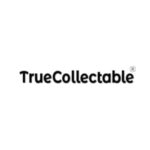Have you ever wondered if the change in your drawer could be worth a fortune? From dusty attics to auction houses, the hunt for the most expensive old coins has become a thrilling pursuit for collectors worldwide. These coins, beyond their monetary value, offer a glimpse into history, culture, and craftsmanship.
In this blog, we’ll dive deep into the stories behind the most valuable old coins, what makes them so desirable, and how you can start—or enhance—your own coin collection journey. Whether you’re new to numismatics or a seasoned hobbyist, there’s something here for everyone.
1. What Defines Value in Old Coins?
When it comes to coins, age alone doesn’t guarantee worth. The true value lies in a unique blend of rarity, condition, demand, historical context, and minting errors. Coins that are rare or were part of limited mintage runs often top the charts of value.
Moreover, collectors pay close attention to provenance and the coin’s physical state. A coin preserved in mint or near-mint condition—especially if it carries historical importance—can skyrocket in value, fetching thousands or even millions at auction.
2. Top 5 Most Valuable Old Coins Ever Sold
While there are thousands of valuable coins out there, a few have made headlines for their record-breaking prices:
-
1933 Saint-Gaudens Double Eagle – Sold for $18.9 million in 2021, this U.S. gold coin is legendary for its rarity and legal battles.
-
1794 Flowing Hair Silver Dollar – Considered the first U.S. silver dollar, it fetched over $10 million at auction.
-
1913 Liberty Head Nickel – With only five known specimens, this coin is valued around $4.5 million.
-
1804 Draped Bust Silver Dollar – Often dubbed the “King of American Coins,” one sold for over $4 million.
-
1343 Edward III Florin – One of Britain’s rarest coins, valued at $6.8 million.
These examples showcase how historical significance combined with scarcity turns metal into treasure.
3. Modern-Day Discoveries: Valuable Coins Found in Circulation
You don’t need a museum vault to find rare coins. Several collectors have stumbled upon valuable pieces in everyday life. Coins like the 1955 Doubled Die Lincoln Cent or the 2004 Wisconsin Extra Leaf Quarter were discovered in regular pocket change.
In addition, coins from the 1960s and earlier, especially silver dimes, quarters, and half dollars, are still occasionally found in circulation. These coins have intrinsic metal value, not to mention their potential worth to collectors.
4. How Coin Errors Increase Value
Ironically, mistakes during the minting process can add extraordinary value to a coin. Coins with double dies, misprints, off-center strikes, or missing elements often attract high collector interest.
One famous example is the 2008-W Silver Eagle Reverse of 2007, a coin accidentally struck with the previous year’s design. These errors are often rare and hard to replicate, making them incredibly appealing and valuable to collectors.
5. International Stars: Valuable Coins Around the World
Rare coins aren’t exclusive to the United States. Around the world, collectors cherish pieces with rich cultural and historical significance.
For instance, the 2007 Canadian $1 Million Gold Maple Leaf, made from 100 kg of pure gold, is one of the most expensive modern coins. Likewise, ancient Roman and Greek coins, such as the Brutus Eid Mar Denarius, offer deep historical connections and impressive auction values.
Expanding your collection to include international coins opens doors to diverse designs and significant historical events.
6. Tips for Identifying the Most Valuable Old Coins
So how can you spot a valuable coin? Start by checking the mint mark—small letters on the coin indicating where it was minted. Certain mints like Carson City (CC) produced lower volumes, making those coins rarer.
Next, analyze the date, edge design, and overall condition. Use a magnifying glass to look for unusual details, errors, or features. Online catalogs and grading services can help determine if your coin is ordinary—or extraordinary.
7. Preservation Matters: Keeping Coins in Prime Condition
The condition of a coin can make or break its value. That’s why proper storage is essential. Avoid handling coins with bare hands, as oils from your skin can corrode them. Use cotton gloves and store them in protective holders.
Additionally, control the environment—keep your collection away from moisture, heat, and direct sunlight. Many collectors use acid-free containers or sealed slabs from professional grading companies for maximum protection and value retention.
8. How to Start Your Coin Collection
Starting your own collection can be as simple or specialized as you like. Some collectors focus on a particular country or period, while others collect by theme—like animals, monarchs, or minting errors.
Begin by researching and acquiring beginner-friendly coins from reputable dealers or coin shows. Join online communities or numismatic clubs to share tips, trade coins, and stay updated on trends and values. Remember, every great collection starts with a single coin.
9. Showcase Like a Pro: Use a Coin and Note Collection Album
Displaying your collection isn’t just about aesthetics—it also ensures long-term protection. A quality coin and note collection album allows you to organize coins chronologically or thematically, making browsing easier and more satisfying.
Albums are designed with archival materials to prevent tarnishing, scratches, and other damage. For collectors serious about preservation and presentation, these albums are indispensable tools that turn a pile of coins into a curated showcase.
💡Conclusion: Your Change Could Change Everything
Coins are more than currency—they’re tangible connections to history, art, and wealth. Whether you’re holding onto old coins or searching for your next find, understanding what makes them valuable will enhance your appreciation and your potential returns.
From misprinted pennies to ancient gold relics, the world of numismatics is filled with mystery and excitement. So take another look at that old coin jar—you might just be sitting on one of the most valuable old coins ever known.

